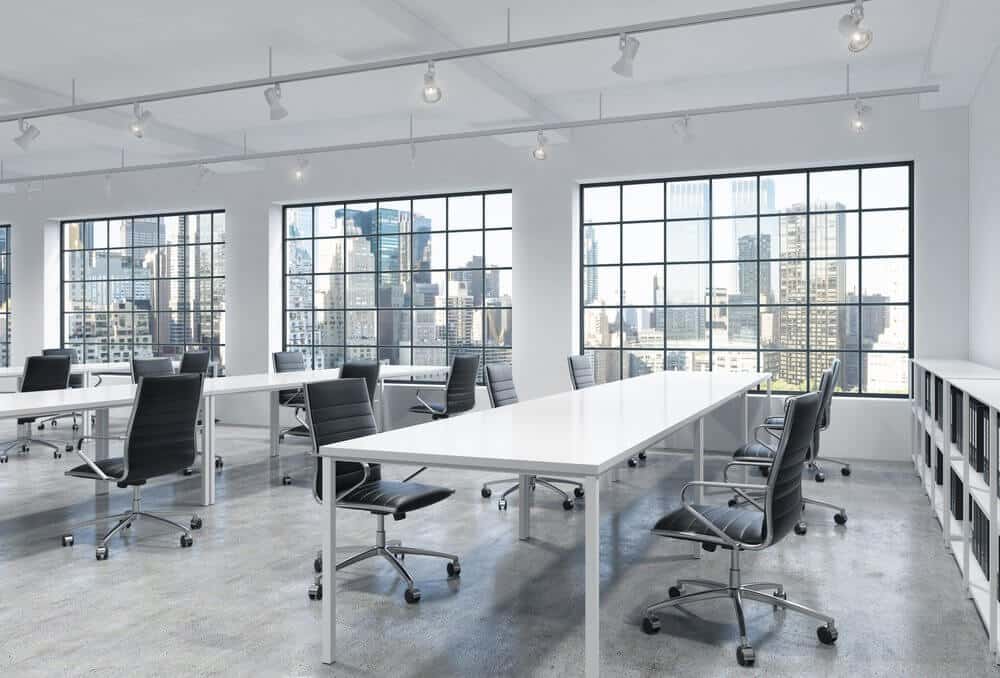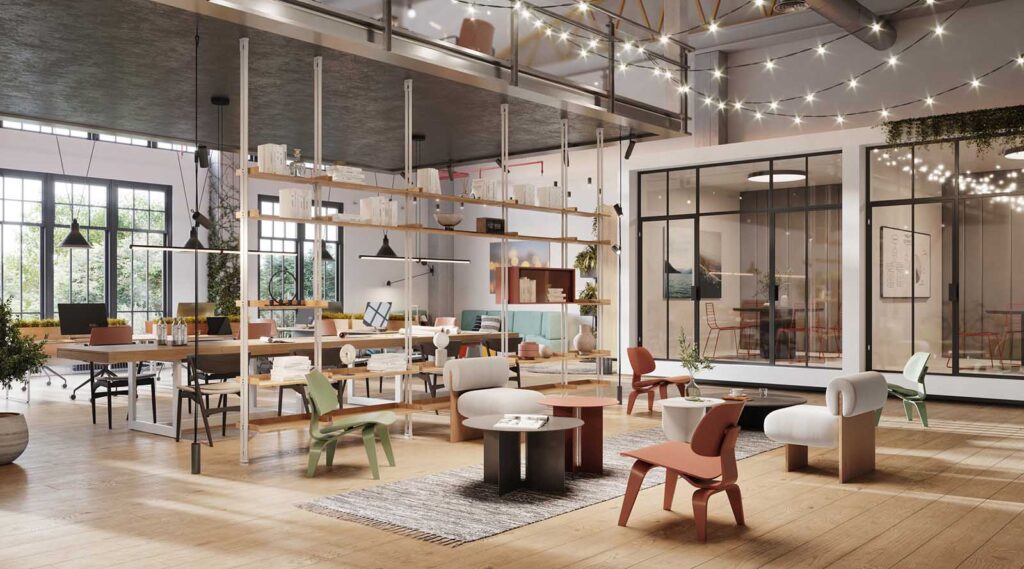Do you know what the rule of 150 is? The number 150 may not seem significant at a glance, but according to theorists, it could mean more to your organization than you think. Enter Dunbar’s Number, a theory from psychologist Robin Dunbar that posits that humans have an upper-level cap on the number of people they can maintain meaningful relationships with. Though it may seem like a strange—and arbitrary—number to settle on, history largely supports the observation: military troops tended to be built in blocks of 150, for instance, and Dunbar’s research of prehistoric society found that communities tended to round out at the same number.
The advent of social media may make it easier for humans to maintain relationships that qualify as “meaningful” past the 150 line. Even so, the idea has interesting applications in places where large-ish groups of humans frequently engage in face-to-face contact, i.e. the modern office. For organizations in the process of rethinking their workspaces, using Dunbar’s Number as a guideline may make it easier to promote beneficial social communication and a sense of individual and communal well-being. Compared to the cold atmosphere of large cube farms, a number that directs and optimizes group size is worth further exploration.
The rule of 150 and Dunbar’s Number in the workplace

It’s important to note that Dunbar wasn’t necessarily thinking about our workplaces when he came up with his hypothesis. Instead, he focused on levels of intimacy, and he breaks his 150 number down into smaller circles: five very close relationships that are generally family or intimate friends, 15 very good friends you can rely on for support, 50 good friends—the kind you might gather together for a birthday party—and the rest casual friends and acquaintances. The makeup of these groups is fluid, and individuals can move from one circle to the next, or out of the grouping altogether.
Few people would exclusively fill all of their relationship circles with people from work, but when you overlay Dunbar’s circles onto the modern workspace, interesting ideas emerge. Making these numbers a point of reference while designing or redesigning a space (or considering new solutions to manage that space) may help workplaces overcome social isolation and other problems that can arise when working alongside huge numbers of people.
Noticing that interaction changed when the roster in a given space approached 150, Bill Gore—founder of Gore Associates, the company that manufactures Gore-Tex goods—carried out a new plan: build another new factory any time a current space grew past this optimal range. The scheme proved wildly successful, with numerous articles and books written on its innovative approach and countless businesses attempting similar measures with their own spaces.
Strategies for applying the rule of 150 and Dunbar’s theory

Of course, not many businesses have the resources, makeup and desire to plunk down a new building—let alone a manufacturing facility—every time the roster exceeds 150. And the latest trends in office layout see companies like Facebook and Apple housing large groups of employees in expansive buildings. Instead of taking one particular approach, organizations looking to optimize around the number need to explore the space their employees already work in, the desired result of a restructure and the amount of effort they are willing to invest to capitalize on the rule of 150. Here are some ideas for getting started.
Like-group restructuring
Chances are your office has several departments with interdependent functions or cross-functional roles and responsibilities. Structuring these groups to work in the same office “neighborhoods” can keep the rule of 150 at play at the highest (150) and lowest (5) levels, ensuring employees largely work around people they know instead of strangers with job functions that don’t overlap.
Hot desking
Given the opportunity, people tend to sit with people they know. Allowing employees to choose where they work for a given period—while employing solutions that allow them to select seating in an orderly, regulated fashion—can help ensure everyone gets the social contact they need, a fact that holds true whether the seating is open across the entire organization or within a given department.
Fluid spaces
Instead of holding spaces to one specific purpose, try to find multipurpose uses for common work areas. The space that serves as a boardroom one day could be a quiet cowork space for a temporary team the next, for instance. This lets your larger teams choose when they want to be five or 15 or 50, and leaves room for employees to connect with those in their smaller social circles.
Whatever strategy your office ultimately employs, tools that make the move (and ongoing seating arrangement) easier will also be critical. Instead of relying on manual processes or outdated solutions, an upgrade can bring several notable benefits: easy desk booking, at-a-glance visualization for the whole office and all its resources, simplified move management and deep reporting and analytics to ensure you’re making the best possible use of your space.
Dunbar’s Number doesn’t need to be a writ-in-stone mandate to bring meaningful change to your current office layout. Used as a general rule, there’s little question that grouping people with others they know—generally by work function—holds value, and that fluid seating and flex spaces allow colleagues to work in optimized clusters. If your current seating strategy isn’t built around this high-level idea, you may very well want to let Dunbar’s Number shine its light on your current workspace design.
Pair your space with the software created to make facilities management easier. Request a free demo of OfficeSpace, and let us show you how our platform is up to the task.
Photo Credits: Shutterstock / fizkes, Shutterstock / zhu difeng, Shutterstock / ImageFlow




